#lesser sulphur crested cockatoo
Explore tagged Tumblr posts
Text
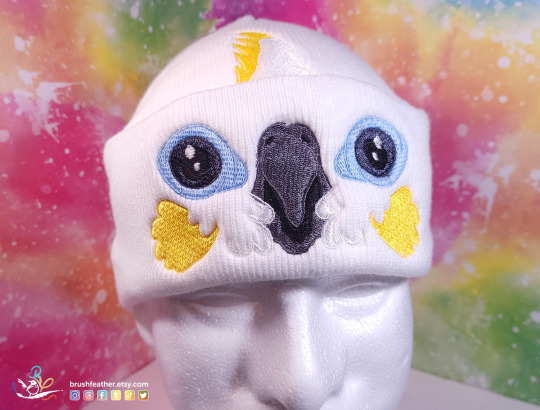
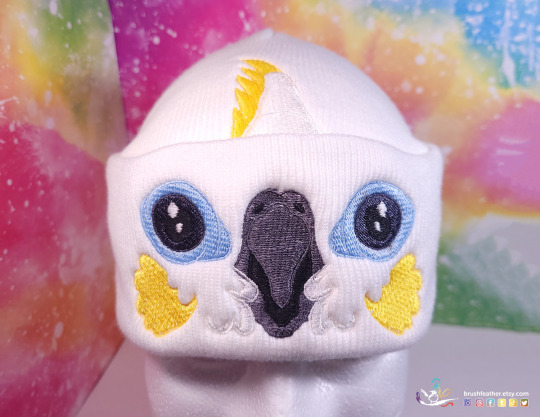
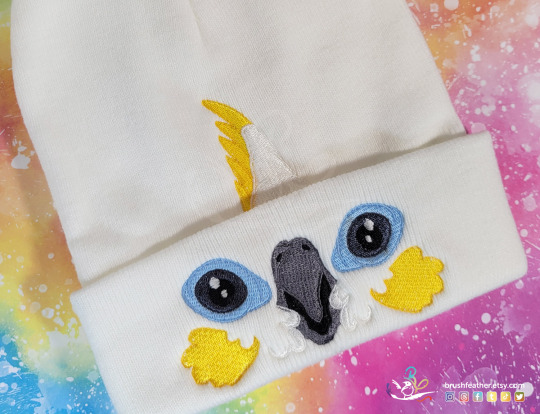
Custom hat completed for the marvelously patient Jacob H. of a lesser sulphur crested cockatoo. First time doing an expressive hat. 😀
#birblr art#finished art#birb#art#bird#parrot#birblr#custom hats#wip#beanies#lesser sulphur crested cockatoo#cockatoo
67 notes
·
View notes
Text
Winged F1
I have to give loads of credits to @eggbreadboi and their wings!AU (which is just BREATHTAKEING) i was VERY heavily inspired so
(this is for the current drivers on the grid others may follow in another post)
i'll put other Options i thought of in […]; How i came to each decision of what bird (or well rather the wings specifically) i choose for each Driver is based on where they are from etc. to kind of have a better overview and to make it a little easier to come to a decision [i am very open to any other suggestions tho!!!] but also what I thought suited them, sometimes also just cus i thought the wings would look cute on them (lol) and the most important also like flying style wise
also other drivers not currently on the grid will get their own list! Also these are just my personal opinions i also might change some in the future or if anybody has any other opinions i am very happy to hear them!!! :]

Oscar Piastri: Pacific Baza [Galah Bird, Sulphur-crested Cockatoo]

Lando Norris: Common Kingfisher [Eurasian Jay, Redstart]

Lewis Hamilton: European Bee-Eater [Osprey]

Charles Leclerc: Common Kestrel [Yellow-Legged Gull, Black Redstart]

Alex Albon: Black Baza [Great Hornbill, White-throated Kingfisher]

Carlos Sainz Jr.: Montagu's Harrier [Iberian Imperial Eagle, Griffon Vulture]

Nico Hülkenberg: Grey Heron [Cormorand, Lesser spotted Eagle]

Gabriel Bortoleto: Anhinga [Jabiro, Toco Toucan]

Pierre Gasly: Little Egret [Great Crested Grebe, Common Eider, Northern Wheateater]

Jack Doohan: Wedgetailed Eagle [Eastern Rosella, Great Bowerbird]

Lance Stroll: Snowy Owl [Redtailed Hawk, American Robin, White-throated Sparrow]

Fernando Alonso: Spanish Imperial Eagle [Northern Goshawk, Firecrest]

Esteban Ocon: Barn Owl [Bearded Vulture, Little Egret, Common Shelduck]

Oliver Bearman: Red Kite [Common Buzzard]

George Russell: Common Crane [Marsh Harrier, Ringed Plover]

Kimi Antonelli: Eurasian Treesparrow [European Green Woodpecker, Common Chiffchaff]

Isack Hadjar: Horned Lark [Marnora's Warbler, Western Reef Heron]

Liam Lawson: Silvereye [Bellbird, Brown Creeper]

Yuki Tsunoda: Japanese Sparrowhawk [Longtailed Tit, Eurasian Wren]

Max Verstappen: Common Buzzard [Common Kestrel, Greenfinch, European Herring Gull]
#f1#lists#f1 wings#f1 wingAU#oscar piastri#lando norris#lewis hamilton#charles leclerc#nico hülkenberg#gabriel bortoleto#lance stroll#fernando alonso#yuki tsunoda#max verstappen#isack hadjar#liam lawson#esteban ocon#oliver bearman#pierre gasly#jack doohan#george russell#kimi antonelli#i have a big fat nasty headache now holy shit
20 notes
·
View notes
Text
List of Birds organized by Order + locations:
Accipitriformes:
Bearded vulture
California condor
Cooper's hawk
Osprey
Red-shouldered hawk
Steller's sea eagle
Anseriformes:
Bar-headed goose
Barnacle goose
Black swan
Common merganser
Red-breasted goose
Snow goose
Trumpeter swan
Apodiformes:
Common swift
Ruby-throated hummingbird
Bucerotiformes:
Abyssinian ground hornbill
Eurasian hoopoe
Cariamiformes:
Red-legged seriema
Casuariiformes:
Emu
Southern cassowary
Cathartiformes:
Black vulture
Turkey vulture
Charadriiformes:
American oystercatcher
Atlantic puffin
Black-headed gull
Black skimmer
Black-tailed godwit
European herring gull
Killdeer
Northern lapwing
Ruddy turnstone
Western sandpiper
Ciconiiformes:
White stork
Columbiformes:
Common wood pigeon
Eurasian collared dove
Luzon bleeding-heart
Nicobar pigeon
Passenger pigeon
Stock dove
Victoria crowned pigeon
Coraciiformes:
Blue-capped kingfisher
Common kingfisher
Cuculiformes:
Asian koel
Greater roadrunner
Yellow-billed cuckoo
Eurypygiformes:
Kagu
Falconiformes:
American kestrel
Common kestrel
Galliformes:
Indian peafowl
Palawan peacock-pheasant
Plain chachalaca
Scaled quail
Western capercaillie
Wild turkey
Gaviiformes:
Common loon
Gruiformes:
American coot
Australasian swamphen/pūkeko
Blue crane
Common moorhen
Sandhill crane
Sora
Whooping crane
Passeriformes:
American bushtit
American robin
Australian raven
Baltimore oriole
Barn swallow
Black-billed magpie
Black-capped chickadee
Black-headed grosbeak
Black-throated sparrow
Blue-headed vireo
Blue jay
Bluethroat
Brown thrasher
California scrub jay
California towhee
Canada warbler
Canyon wren
Cave swallow
Cedar waxwing
Chestnut-backed chickadee
Common blackbird
Common chlorospingus
Common raven
Eastern wood pewee
Eurasian blue tit
Eurasian bullfinch
Eurasian golden oriole
Eurasian jay
Eurasian magpie
European robin
Goldcrest
Great-tailed grackle
Great tit
Hooded crow
House sparrow
Indigo bunting
Jamaican crow
Kirtland's warbler
LeConte's sparrow
Long-tailed tit
Mexican jay
Painted bunting
Phainopepla
Pine siskin
Pin-tailed whydah
Pinyon jay
Pygmy nuthatch
Red winged blackbird
Rook
Saltmarsh sparrow
Satin bowerbird
Spotted towhee
Steller's jay
Tufted titmouse
Wallcreeper
Warbling vireo
Western tanager
White-breasted nuthatch
White-throated dipper
White-throated magpie-jay
Yellow-rumped warbler
Pelecaniformes:
Black-crowned night heron
Brown pelican
Great blue heron
Great egret
Great white pelican
Least bittern
Roseate spoonbill
Shoebill stork
Snowy egret
Phoenicopteriformes:
American flamingo
Chilean flamingo
Piciformes:
Acorn woodpecker
Clark's nutcracker
Great spotted woodpecker
Lesser spotted woodpecker
Lewis's woodpecker
Northern flicker
Pileated woodpecker
Red-bellied woodpecker
Red-headed woodpecker
Podargiformes:
Tawny frogmouth
Podicipediformes:
Pied-billed grebe
Procellariiformes:
Wilson's storm-petrel
Psittaciformes:
Australian king parrot
Chestnut-fronted macaw
Citron-crested cockatoo
Cockatiel
Galah
Gang-gang cockatoo
Pacific parrotlet
Red-masked parakeet
Rose-ringed parakeet
Sulphur-crested cockatoo
Strigiformes:
Barn owl
Barred owl
Burrowing owl
Eurasian eagle-owl
Suliformes:
Anhinga
Blue-footed booby
Double-crested cormorant
Trogoniformes:
Elegant trogon
Locations:
Africa
America
Antarctica
Asia
Australia
Eurasia
Europe
Oceania
9 notes
·
View notes
Text
Meet Napoleon!
This is Napoleon Bonaparte.

He is a lesser sulphur-crested cockatoo. He is 18 months old. And while I do OWN a cage for him, it will only be used if I need to take him to the vet or something - he can hardly wear a seatbelt in my car, so a cage is the safest option for him there.
He is my new pet, and I love him already.

Not sure if he loves me yet, but at least he knows me. I’ve been visiting the seller many many times, so the bird would have a chance to learn to know me before coming home with me.
Welcome to the family, Napoleon!
10 notes
·
View notes
Text
I drew my sweet bird 🥰

3 notes
·
View notes
Photo

“I got it from him!! :)”
also a photobomb from choochoo the yellow-crested cockatoo (aka lesser-sulphur)
#bird#birb#birblr#cockatoo#parrot#moluccan cockatoo#sulphur crested cockatoo#lesser sulphur crested cockatoo#yellow crested cockatoo#choochoo#choochoo the cockatoo#valentine the cockatoo#mine#i got it#princess#pink#victory#quiviraspets
16 notes
·
View notes
Link
This isn’t “new” as the post above is from 2011, but I was curious if there were any actual lifespan studies on pet or zoo parrots, and found this first.
Here is the link to the actual study: https://zslpublications.onlinelibrary.wiley.com/doi/full/10.1111/j.1469-1795.2011.00477.x#t2
From what I have learned from lifespan studies on toothed whales, I know talking about lifespan can be very, very difficult.
(Apologies in advance that this post got so long-winded.)
----------
For example, when looking up beluga whale “average lifespan”, you can find figures anywhere from 13 to 80 years, both claiming to be “average”. But what does that mean?
Rather, 13 years is what they found the lifespan of belugas to be counted from birth, including all calves that die (which is a very high number). 80 years being the estimated maximum, and then some perhaps less educated person put that as “average lifespan” on a website about whales.
I think the reason for this comes largely because we judge from those two species closest to us; humans and dogs. Human lifespan? Eh, 80 years. In many countries today, a girl has a life expectancy at birth of perhaps 83 years. That is also very close to a “maximum” lifespan (say 90 years), with the exception of some outliers that live far longer. When you’re 83-90 years old, you’re quite ripe, as a human. So “maximum” and “average” is very close, in humans.
As for dogs, 11 years is about average. It’s also old, with some living a bit longer, say the maximum is about 15 (again, with the exception of some remarkable individuals). So, average and maximum, pretty close.
As for beluga whales, the maximum may be about 60-65 (I frankly don’t know where they got “80″ from, as the oldest small whales and dolphins tend to die off in their early 60s, I don’t know of any confirmed older than 65), but the average adult dies in its 30s, and life expectancy at birth is ~13-15.
So the maximum is about twice the typical lifespan for an adult which is about twice the life expectancy at birth. You see how this is complicated? I talk about whales here because it’s what I know best.
To compare with humans, in a more “wild” setting (our ancestors), the maximum we have today of ~115 is twice what our ancestors would start dying at (55 would be quite old and a lot of them would be dead, but they could still sometimes live to 90), and our life expectancy at birth was closer to 25-30, due to high infant mortality. Three completely different figures, in the same way as the belugas.
So allow me to wonder when I read this study on parrot lifespan in zoos. First... and this is the same as with whales in zoos... the older animals will have been caught or born in a time when we didn’t know how to care for them very well (and this study goes back to animals born in the early 1800s). They may have spent their first several decades, or even their entire lives, with a poor diet, habitat or care.
Any animal born in the 1990s or 2000s, that is dead today... obviously didn’t get to live a long time, for whatever reason. Animals born in 2000 or 2010 that will live to the age of 50 or beyond, will not yet die and be included in a study like this for a long time, so they are not included. Again, complicated. (And which is why, when I calculate lifespans, I use strict rules for time of birth and death, and don’t mix those groups, like animals born in 1950 with those born in 1990.)
I know these people are professionals and I am not, but each study is different, and different methods may be used. I am just writing all this to explain how lifespan studies are complicated and may not always give a true picture.
----------
To the point then, I am confused regarding the cockatoos:
It says the oldest Moluccan cockatoo lived to an age of 92 years, but that the average lifespan for birds who survived to adulthood was a mere 9.5 years.
The oldest greater sulphur-crested lived to nearly 73 years, and the oldest lesser sulphur/yellow-crested lived to just under 40 years. Okay. And for both species, the average for those who survived to adulthood, was 8-10 years.
This doesn’t make any sense. Putting these three species together, all with the same average in the end, the maximum was ~68.49 years. That puts the average (not at birth, but for those who survived their first four years) at a mere 14.2% of the maximum lifespan.
I assume zoo parrots would be spared from many of the dangers pet birds are exposed to (open windows, pet cats and dogs, open water, flying into windows, being caught in doors, etc.), so this really makes me wonder at the causes of death.
I could try to make an unprofessional little study by looking around forums where people report their parrots deaths at various ages. Again, it would be very unprofessional and could not be directly compared (no two studies can ever truly be compared side by side, unless the exact same methods were used), but it would be interesting to see, because I just find this so unlikely.
Looking at the macaws, it’s interesting as their maximum ages were not as high as those of the cockatoos, but their average was better, in their 20s or near the 20s. The highest average (of the birds who survived to adulthood) with a reasonable sample size was of the red-tailed amazon, at 21.93 years, from a sample of 15 birds. (And makes me wonder even more why so many cockatoos died young?)
It does say the oldest Meyer’s parrot lived to be 31 (and the average was 9), but I know for a fact that Meyer’s parrots have lived to be over 40 (outliers, however). I guess I can be happy that my Meyer’s is now 18. While data on her species is very poor, I expect her to maybe live to her 30s.
My white-bellied caique got sick and died a few months before his fourth birthday. Looking at his species here, it says this:
34 birds total. The oldest lived to 23.14 years. Total average lifespan was 4.97 years, with 8 birds dying before the age of 4. The remaining 26, who survived to the age of 4 and beyond, died at an average of 5.79 years. However, the additional 3 birds alive when they published the study in 2008, averaged 20.28 years. Huh. (Three is a tiny sample size and you can’t compare living ages with the lifespan of the dead, but it’s funny that they averaged so close to the maximum.)
Anyway. I will be looking at more studies and surveys that might exist of captive parrot lifespans, because this is interesting, and while I doubt 9-10 years is actually a normal lifespan for large cockatoos, I’m certain “50-100 years or more” only belongs to outliers.
14 notes
·
View notes
Text
Clever cockatoos have learned to open kerb-side bins — and it has global significance
Move over, bin chickens: bin cockies are here, and scientists say they're confirming the cultural intelligence hypothesis.
John Martin, University of Sydney; Barbara Klump, Max Planck Institute of Animal Behavior, and Lucy Aplin, University of Konstanz
In a small, isolated village in southern Sydney, the local sulphur-crested cockatoos are particularly clever. Once a week, when the neighbours roll their wheelie bins to the kerb, cockies fly over and, with skillful dexterity, open the lids in search of food.
It may seem as though cockatoos opening a kerb-side bin lid is a simple action. But our research, published today in Science, discovered this behaviour is far more significant than you may have first thought.
Sulphur-crested cockatoos are copycats. After one solves the lid-flip puzzle, other birds nearby imitate the new foraging behaviour in a stunning display of “social learning”.
For decades, scientists believed humans were the only animals capable of culture. Now, thanks to the community’s observations, we can add parrots to this small (but growing) list, which also includes chimpanzees, humpback whales and New Caledonian crows.
youtube
Clever, mischievous cockies
In Australia, sulphur-crested cockatoos (Cacatua galerita) are often thought of as being in your face, full of attitude and mischief. But if we take the time to observe them, we can see they’re also intelligent, curious and adaptable.
You might have seen a variety of their social interactions, such as play. Have you watched cockies hanging on powerlines like a trapeze artist?
Cockatoos are also highly dexterous, holding food with their foot and manipulating it with their beak and tongue. This includes skillfully eating the seeds from a gardener’s mortal enemy — the bindii weed — and lessor foes, such as onion grass.

Cockatoos love to play, and swing on powerlines like trapeze artists. Shutterstock
But bin opening is a new foraging behaviour that hadn’t been observed until recently. Thankfully, one member of our research team lives in the local area, and saw cockatoos opening bins firsthand in 2014.
This kicked off our bin-opening survey in 2018, where we asked community members to report if they “have” and, importantly, “have not” observed bin opening across the greater Sydney region and beyond.
Thanks to these reports and our own observations, we soon discovered this behaviour spread to neighbouring suburbs over the following years.
We also found that between suburbs, where the birds’ social networks were separated, there were subtle differences in bin-opening styles, and these became increasingly different between suburbs further apart.
Only around 10% of birds in each flock learned how to open bins. The rest benefit from the behaviours of these pioneers. Interestingly, we found adult males were most likely to know how to open bins. Adult females and juveniles also displayed this behaviour, but to a lesser extent.

Cockatoos use their feet and beak to lift open the the wheelie bin lid. Barbara Klump, Author provided
What’s all the fuss about, anyway?
To many of us familiar with the cleverness of cockatoos, it might come as no surprise they can learn by watching each other. So in case you aren’t as fascinated as we are by this discovery, here are a couple of reasons to get excited.
First, it shows we can all make interesting scientific observations in our everyday lives — even in the suburbs where we live.
Second, only 70 odd years ago, humans started questioning the idea only human society was culturally complex. Humans are masters of social learning. From an early age, we copy skills from other children and adults.
But this study helps reaffirm that a range of other animals are also culturally complex.
There are three main traits associated with so-called “cultural animals”: larger brain size, living in social groups, and being long lived. This is known to scientists as the “cultural intelligence hypothesis”.
And when lands change, for example, for urban growth or agriculture, it stimulates the emergence and spread of adaptive behaviours. This creates new opportunities for cultures to develop.

Chimpanzees and other primates are among the few animal groups known to be capable of social learning. Now, we can add parrots to this list. Shutterstock
Cities and urban areas provide fertile grounds for this, as animals that live there often have to change their behaviours to exploit different foods and shelter options, and to survive new threats — think cats, rats, and cars.
It’s likely most of us have observed animals adapting to new environments. A classic example from Sydney is the bin-chicken — aka Australian white ibis. These birds also forage in bins (but not opening the lids) and now nest in urban palm trees rather than their traditional flooded wetland reed beds.
Another fascinating example is grey-headed flying-foxes. Despite being vulnerable to extinction due to population decline and habitat loss, these bats have become more common in urban areas over recent decades. This has required adaptation to lights, noise, humans, and the different flowers and fruits we grow in our gardens, parks and streets.
Adaptive behaviours like these are assumed to be the result of genetic change, or innovations. The challenge is to confirm if these innovations spread via social learning through the population, resulting in new, adaptive cultures emerging.

You may find bin chickens annoying, but they are incredibly resilient, adaptive birds. Shutterstock
How you can make a difference
Cities are also full of people who can share observations of innovative behaviours, and we encourage you to get involved in citizen science.
A major benefit of community participation in science is increased geographic coverage in a short amount of time. Individual scientists can only survey a small number of sites, but by involving the community, we can cover large parts of a suburb, city, or a country at the same time.
There are dedicated citizen science projects you can participate in, such as our Big City Birds research. We use this app to learn about nesting, foraging, nocturnal roosts, and adaptive behaviours of birds across Australia (and not just in the big cities).
Other recommended projects include eBird, iNaturalist, DigiVol, FrogID, and Urban Field Naturalist. It even helps to share any interesting observations through social media, an indirect way to inform scientific research. To help us, you can tag @Big_City_Birds or use this hashtag: #BigCityBirds.
With a range of similar studies underway, it’s likely scientists will discover more evidence of culturally complex behaviours in other species, continuing to challenge our idea of what it means to be human.
John Martin, Adjunct lecturer, University of Sydney; Barbara Klump, Researcher, Max Planck Institute of Animal Behavior, and Lucy Aplin, Research Group Leader, University of Konstanz
This article is republished from The Conversation under a Creative Commons license. Read the original article.
Clever cockatoos have learned to open kerb-side bins — and it has global significance published first on https://triviaqaweb.weebly.com/
0 notes
Photo

[Image: A lesser sulphur crested cockcatoo looking slightly away from the camera with their entire body fluffy up sweetly.] This little one just wanted some love. As a cockatoo do.
443 notes
·
View notes
Text
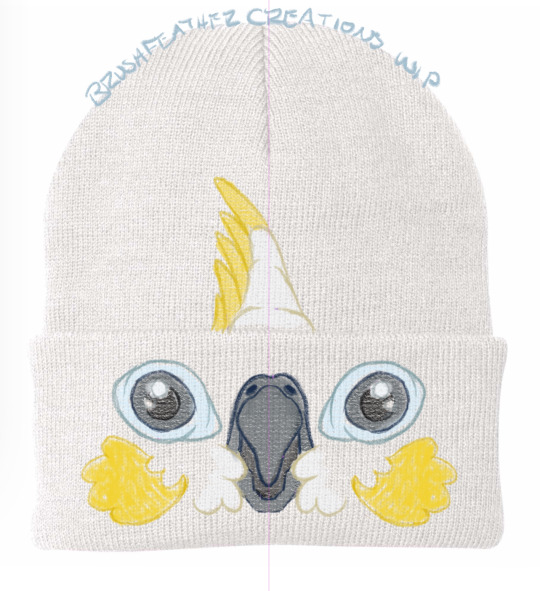
Hat commission sketch that was just approved by a customer.
I'm nearly always open for custom hats! Best place to message me if you're curious is Etsy, but here is good, too.
#wip#birblr art#birb#bird#sketches#hats#custom hats#beanies#lesser sulphur crested cockatoo#cockatoo
5 notes
·
View notes
Text
Tumblr pet bird census 2017 - results;
Thankyou all for participating in this. All together there are 1,203 birds in the count.
Below, they are seperated into species and sub-species in descending order.
348 Budgies
224 Cockatiels
216 Chickens
- 18 Rhode Island reds - 6 Silky - 2 Black Sumatra - 4 American Bantams - 3 Belgian Bearded D'Uccle Bantams - 1 Buckeye - 2 Buff Orphingtons - 1 Brahma - 2 Marans - 1 Isa Brown - 1 Sussex - 6 Isa Brown/Sussex mix - 1 Golden Laced Wyndotte - 165 Other
99 Conures - 69 Green Cheeked - 10 Sun - 3 Blue Crowned - 1 Lilac Crowned - 6 Nanday - 3 Jenday - 1 Red Throated - 3 Yellow Sided - 1 Nanday/Sun Hybrid - 1 Peach-Fronted
41 Finch - 11 Society, - 24 Zebra, - 2 Green Singer, - 1 Gouldian, - 4 Other
40 Lovebirds - 18 Peachface - 1 Black Masked - 8 Fischer - 13 Other
38 dove - 17 Diamond - 13 Ringneck - 7 Other
26 Indian Ringnecks
24 African Greys - 16 Congo - 4 Timneh - 4 Other
21 Quail - 20 Button - 1 Chinese Dwarf 18 parrotlet 11 Quaker
11 Canaries 10 Amazon - 1 Orange winged - 1 Red Crowned - 1 White Fronted - 1 Red Lored - 4 Blue Fronted - 1 Yellow Naped - 1 Other
8 Pigeons - 2 Fancy - 2 Mixed breed - 1 Rock - 1 Classic Old Frill - 3 Other
8 Cockatoos - 1 Sulphur Crested - 1 Lesser Sulphur Crested - 1 Blue Eyed - 2 Goffins - 2 Umbrella - 1 Moluccan - 1 Other 6 Sengal 6 Macaw - 2 Hahns - 2 Severe - 2 Blue & Gold - 1 Other 5 Ducks - 1 Muscovy - 4 Other
5 Meyers Parrot 4 Canary-wing Parakeet 4 Caique - 1 Black Beaded - 1 White Bellied - 2 Other
4 Bourke Parrots
3 Guinea Fowl
3 Rainbow Lorikeet 3 Eclectus
3 Kakariki
4 Poinus - 2 Blue Headed - 1 Bronze winged - 1 White Capped Maxamillion Poinus mix
2 Jardine Parrots
2 Moustache Parakeet
2 Lineolated parakeets
1 Indian Ringneck/Moustache Parrrot Hybrid 1 Red-bellied parrot 1 Pheasant 1 port Lincoln parrot *Disclaimer* Some reblogs and tags were deemed invalid as there wasn’t enough information including breeds or types of birds for me to add your information to the count.
#avacado-and-louie#birb#birblr#birds#bird#petblr#animablr#tumblr pet bird census 2017#budgie#budgies#parakeet#parakeets#lovebird#lovebirds#cockatiels#cockatiel#parrot#parrots#pheasant#chicken#chickens#moustache parakeet#moustache parrot#port lincoln parrot#red-bellied parrot#jardine parrot#poinus#kakariki#eclectus#lorikeet
302 notes
·
View notes
Photo

Meet the Birds! This is SAMMY!!!! He is a Lesser Sulphur Crested Cockatoo . Please follow us username easternexotics and Add our Facebook page at www.facebook.com/EasternEX #easternexotics #adventure #adventureawaits #animal #animallove #animallovers #savetheanimals #picoftheday #pictureoftheday #instagood #wildlife #nature #environment #wecanallmakeadifference #instapic #savetheplanet #savetheenvironment #lifeislife #wildlife #wildanimals #nonprofit #nonprofitorganization #foundation #fundraiser #macaw #bird #parrot #rescue #cockatoo (at Eastern Exotics Wildlife Foundation) https://www.instagram.com/p/BsQo3OTBnCU/?utm_source=ig_tumblr_share&igshid=1b91dqpovtex
#easternexotics#adventure#adventureawaits#animal#animallove#animallovers#savetheanimals#picoftheday#pictureoftheday#instagood#wildlife#nature#environment#wecanallmakeadifference#instapic#savetheplanet#savetheenvironment#lifeislife#wildanimals#nonprofit#nonprofitorganization#foundation#fundraiser#macaw#bird#parrot#rescue#cockatoo
0 notes
Link
KOMODO TOUR PACKAGE 3D/2N

DAY 01 LABUAN BAJO - RINCA ISLAND – PADAR [-/L/D]
Our officer will meet and greet you at Labuan Bajo Airport than transfer to the pier to set sail for Rinca Island. The journey time is approx. two hours and you will be served lunch on board. Exploring Rinca Island with your own personal local ranger who will lead you through this nature reserve to look for the famous Komodo dragons and also encounter other wild animals (eg. wild buffalo, long-tailed macaque and wild boar) and birds along the way. Afterward sailing to Kadar for sunset & overnight.
Dine and sleep on board

DAY 02 PADAR - KOMODO ISLAND – PINK BEACH –KANAWA ISLAND - LABUAN BAJO -[B/L/-]
Breakfast on board
Early morning sail from Padar to Komodo Island. A local ranger will lead you through this nature reserve pointing out the various wild animals and birds (eg. lesser-sulphur-crested cockatoos, collared kingfisher) that can be found here. Afterward back on the boat to proceed to Pink Beach for a cool-down swim and snorkel the un-spoilt coral reefs, then sail to Labuan Bajo with a stop for the last snorkeling in Kanawa Island
Lunch will be served on board and sail back to Labuan Bajo where you will be picked up and taken to your hotel.
Accommodation at Komodo Boutique Hotel/L Bajo Hotel (Standard room). Dinner will be on your own cost
DAY 03 LABUAN BAJO – CITY TOUR - AIRPORT [B/-/-]
Breakfast at the hotel
If time permits – morning excursion to Batu Cermin Cave before transfer to the airport for your afternoon flight to Bali.
RATE INCLUSION :
Meals as per itinerary, entrance fee, English speaking Guide, Rangers' fee, snorkeling tools, accommodation (twin share-standard room), private wooden boat, private car, mineral water on board, snack coffee or tea on board.
RATE EXCLUSION :
Flight ticket, Airport tax, Camera fee, Donation, Alcoholic, Laundry, typing and other expenses
PRICE :
Please contact us for our special price.
Amazing Trip Planner
Visit : paket tour komodo 3 hari 2 malam, paket wisata komodo 3 hari 2 malam, harga paket wisata komodo 3 hari 2 malam, harga paket tour komodo 3 hari 2 malam, labuan bajo, pulau komodo, pulau rinca, pink beach, tour komodo, komodo tour package, paket wisata pulau komodo murah, tour labuan bajo murah, open trip labuan bajo 2017, tour labuan bajo murah 2017, paket wisata labuan bajo 2017, backpacker ke pulau komodo, open trip komodo 2017, agen tour, agen tour di bandung, agen tour terpercaya, agen tour dan travel, tour and travel bandung murah, tour and travel bandung, agen tour bandung, agen tour and travel, paket city tour bandung, paket wisata bandung tahun ini, paket wisata bandung terbaru, paket wisata bandung terupdate, harga paket wisata bandung tahun ini, harga paket wisata bandung terbaru, harga paket wisata bandung terupdate
#pakettourkomodo3hari2malam#paketwisatakomodo3hari2malam#hargapaketwisatakomodo3hari2malam#hargapakettourkomodo3hari2malam#labuanbajo#pulaukomodo#pulaurinca#pinkbeach#tourkomodo#komodotourpackage#paketwisatapulaukomodomurah#tourlabuanbajo#tourlabuanbajomurah#opentriplabuanbajo2017#tourlabuanbajomurah2017#paketwisatalabuanbajo2017#backpackerkepulaukomodo#opentripkomodo2017#agentour#agentourdibandung#agentourterpercaya#@agentourand travel#tourandtravelbandungmurah#tourandtravelbandung#agentourbandung#agentourandtravel#paketcitytourbandung#paketwisatabandungtahunini#paketwisatabandungterbaru#paketwisatabandungterupdate
0 notes
Photo

Cacatua sulphurea -Plyctolophus sulphureus Lesser Sulphur-crested Cockatoo -by Edward Lear 1812-1888 - high resolution image from old book.
0 notes
Photo
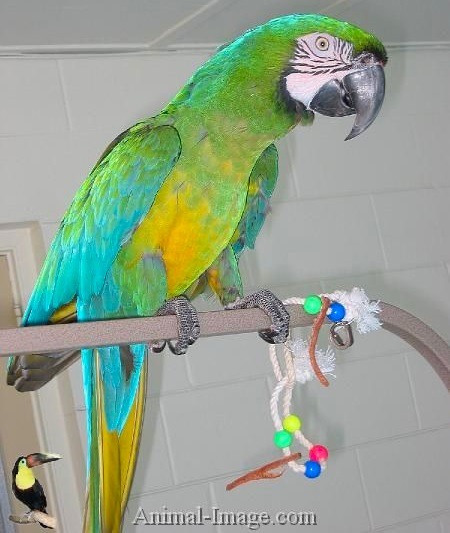
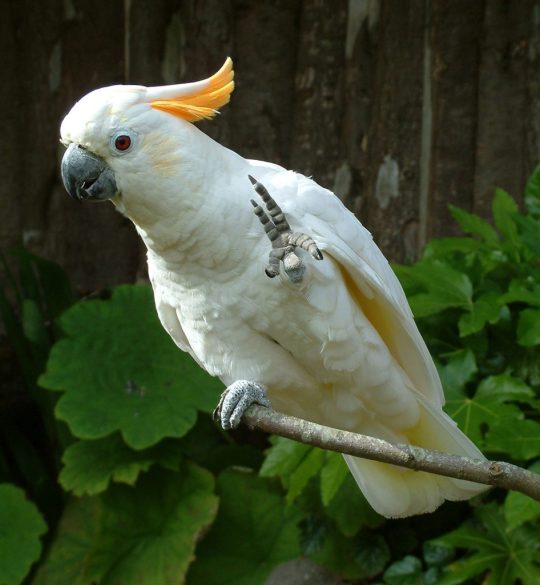
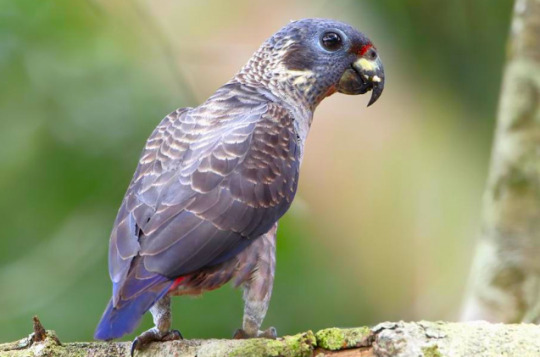
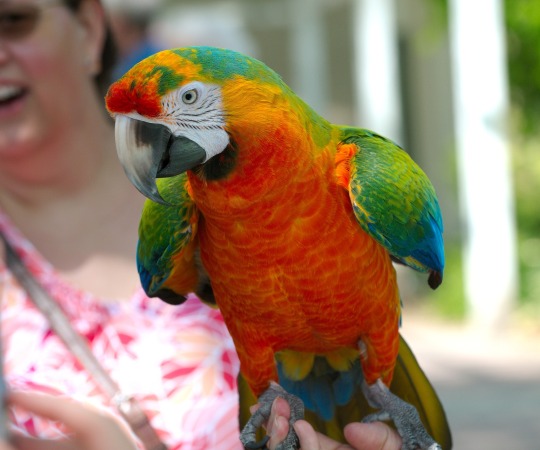

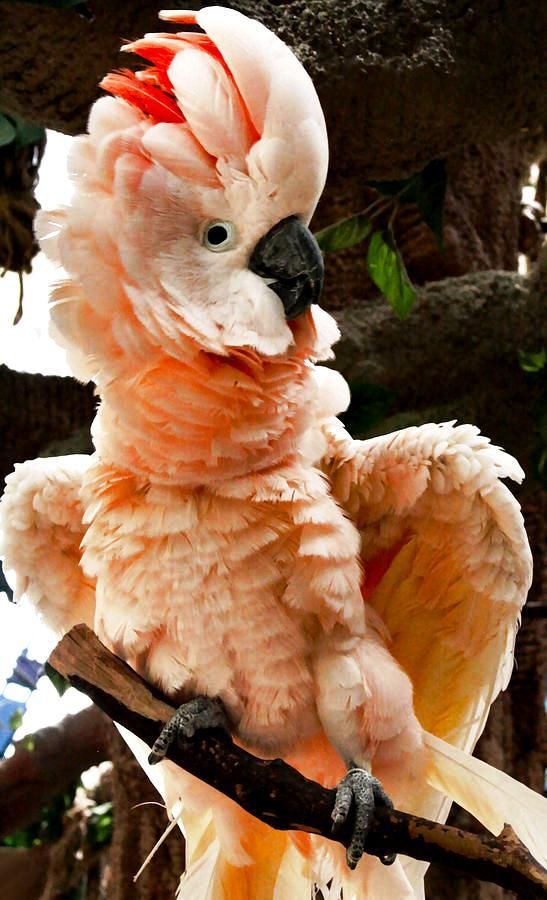

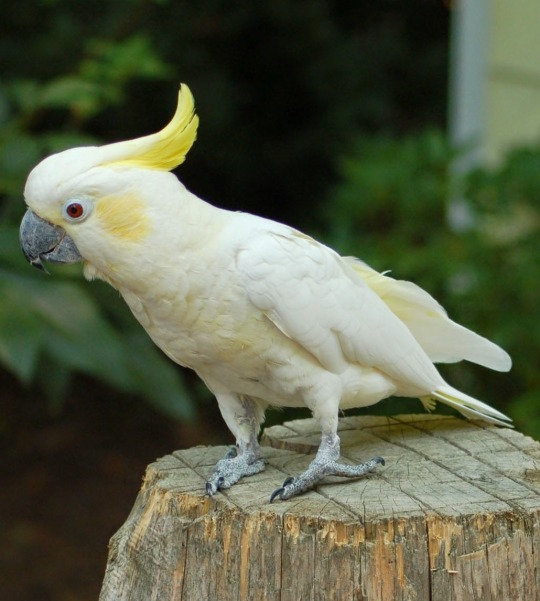

My Birdie Wishlist - no one is going to read all of this
Just for fun, here is my wishlist of birds parrots.
I made a collage last spring of all the exotic pets I wanted (most of which are gone now, as I realize with my limited time and resources, as well as living in Norway, I will have to stick to my favorites, namely parrots and reptiles), which had sixteen parrots on it, changing species on and off as I learned more and understood my wishes and abilities more. (I do not want any more Poicephalus and they are not suitable with other parrots, I can never afford a €25k Palm cockatoo, I like some species but they have to be down-prioritized for various reasons, etc...)
I thought hell, lots of breeders and enthusiasts keep dozens of parrots in aviaries, sixteen is not that much? But I realized recently as I thought planned dreamed a little more, that I want to have a relationship with each bird, so I will have to keep my wishlist to under ten birds. (Also, I already have two, though they are middle-aged, they have probably 10-20 and 20-40 years left, respectively.)
So these nine ^ are what came out finally. Miligold (military x B&G macaw), Citron-crested cockatoo, Dusky pionus, Camelot macaw (75% Scarlet, 25% B&G), Hawk-headed parrot, Moluccan cockatoo, Bronze-winged pionus, Lesser sulphur-crested cockatoo, and Golden conure.
I also have a soft spot for the Alexandrine, especially the new lutino mutation (which is actually a hybrid with the Indian ringneck). It sounds shallow but I love yellow birds and I will pick the one that has a better suited temperament, also the Golden conure is endangered so I don’t know if it should be considered unethical to keep them as pure pets. (And €2000 is a pricey little conure. Hardly any of the other birds cost that much.)
Also I may want a white-bellied caique again instead, as my Pumpkin sadly got a wasting disease and died, and he was an amazing little puppy. :(
Cockatoos have an unfair reputation, in my opinion. Yes they are special and yes they are high-maintenance, but I find a lot of parrot people just can’t stand cockatoos, or fear them. (I on the other hand, am that way with Poicephalus and Amazons. XD They scare me.) I love the flashiness and sugar-high toddler personality of the cockatoos. With these three (or just the first two, we will see), I will only get females as young birds, and raise them with the flock. Males are far more unpredictable, and some turn out as killers of other birds. (Also I love the red-tailed blacks... and there is a breeder in Norway that sells them for about €3k. But it is a very special bird that would need careful planning. My favorite is the yellow-tailed, but they cost some €25k per bird.)
Hawk-heads also seem to have a strange reputation online, that got spread like “I heard someone said that someone read that they can be really mean”, while when you read from first-hand experience, they seem like any normal South American parrot (their closest relative is the caique).
I have owned sulphur-crested cockatoos and a scarlet macaw before, but that was when I was 15-21 years old and living in an apartment. A completely different life situation, and even a different person who owned them. I am now nearly 30 and won’t be able to build this flock up for quite a few years yet. Maybe I will have the two Pionus in 2-3 years.
I will be making an entire building for these, by the way. I love cockatoos, but not indoors 24/7. XD Especially as they’re the only parrots that regularly scream in the dark. Because they don’t want to go to bed. (And 100 other reasons. Many animals are lovely to interact with, but very difficult to keep inside the home.)
I have heard a bit of iffy things about pulmonary problems in macaws from being kept with toos and greys, especially the B&Gs (theorized to be due to their bare nostrils), and both of these are B&G hybrids. Some terrible stories, some have kept them together for decades with no problem (rescues/sanctuaries especially).
I will probably keep the macaws separate in their own smaller indoor aviary, in another room, but let them share space with the other birds outdoors, and go out to the main area for enrichment, but keep it very clean and dust-free, and the macaws would be in their own air-space for 18+ hours per day.
I have made a lot of videos, articles and lengthy annoying forum posts against hybrids and the pet parrot trade in general between 2008-2014, but I have changed in my beliefs a lot since then. So in case you stumble upon my videos... know that I don’t stand by them anymore, but I am leaving them up.
7 notes
·
View notes
Text
australia bird list so far:
Australian White Ibis
Masked Lapwing
Silver Gull
Rainbow Lorikeet
Rock Dove (pigeon <333)
House Sparrow
Australian Magpie (haven’t been swooped yet)
Magpie-Lark
Indian Myna
Crested Pigeon
Australian Brush-Turkey
Noisy Miner
Pied Butcherbird
Australian Pelican
Laughing Kookaburra
Lesser Crested Tern
Black Naped Tern
White Tern
Pied Cormorant
Little Cormorant
Australian Raven
Sulphur-Crested Cockatoo
Dusky Moorhen
Pale Vented Bush-Hen
Royal Spoonbill
Black Swan
Australian Wood Duck
Pacific Black Duck
Great Bowerbird
Magpie Goose
0 notes